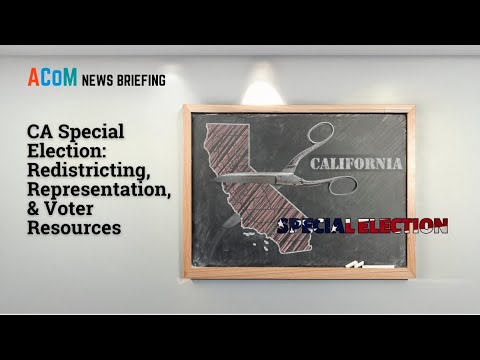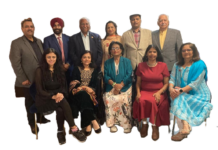Vidya Sethuraman
India Post News Service
California is gearing up for an unprecedented special election on Nov. 4. New congressional districts are on the ballot and the balance of power in Congress. This election is all about representation. President Trump ignited a mid-decade redistricting battle, demanding new congressional maps in Texas to favor the Republican Party ahead of next year’s midterms. Now, California is attempting to counterbalance this move through new maps proposed in the upcoming special election.
Nonpartisan voting rights experts from Common Cause detailed what this special election means for Californians, the key information voters need to know, and how voters can find nonpartisan help making their voices heard at the polls.
Darius Kemp, Executive Director, California Common Cause at the meeting said that district redrawing is not a purely technical issue, but a political project related to “equity and the future.” He recalled that in 2008 and 2010, California took the lead in drawing district districts led by citizen committees to ensure that “voters give priority, not politicians.” He stressed: “Our goal is to ensure fairness, transparency and representation at every level. We are working hard to make the voices of all communities truly heard in elections.” “Districts cannot be designed to deny communities of color the opportunity to elect their preferred representatives. Over the past 15 years, the representation of African-American and Latino voters has been facing erosion, so reforms in California are particularly critical.”
Brittany Stonesifer, Voting Rights and Redistricting Senior Program Manager, California Common Cause provided key information for voters during the briefing. All U.S. citizens and California residents over 18 years old can vote, and those 17 years old can pre-register. “Many people mistakenly believe that criminals cannot vote, but this is only true for those serving time in state or federal prison.” Experts at the meeting unanimously emphasized that this special election is not only a political event in California, but also a microcosm of the test facing the democratic system across the United States. “This is not a technical issue of drawing lines, but a question of trust in democracy,” the meeting concluded.
Dan Vicuña, Senior Policy Director for Voting and Fair Representation, Common Cause said Proposition 50 is a temporary measure designed by California to deal with political manipulation in Texas. “Trump asked Texas this summer to redraw congressional districts to cut five Democratic districts into Republican-controlled districts. California responded with Proposition 50, hoping to maintain the balance of power before the 2026 midterm elections.” After the passage of this proposal, it will affect the configuration of congressional districts from 2026 to 2030. Currently, states including Missouri, Kansas, Indiana and other states are also promoting midterm constituency redrawing, mostly with the aim of weakening the votes of people of color. “We should not let politicians choose voters, but let voters choose representatives,” Vicuña emphasized.







